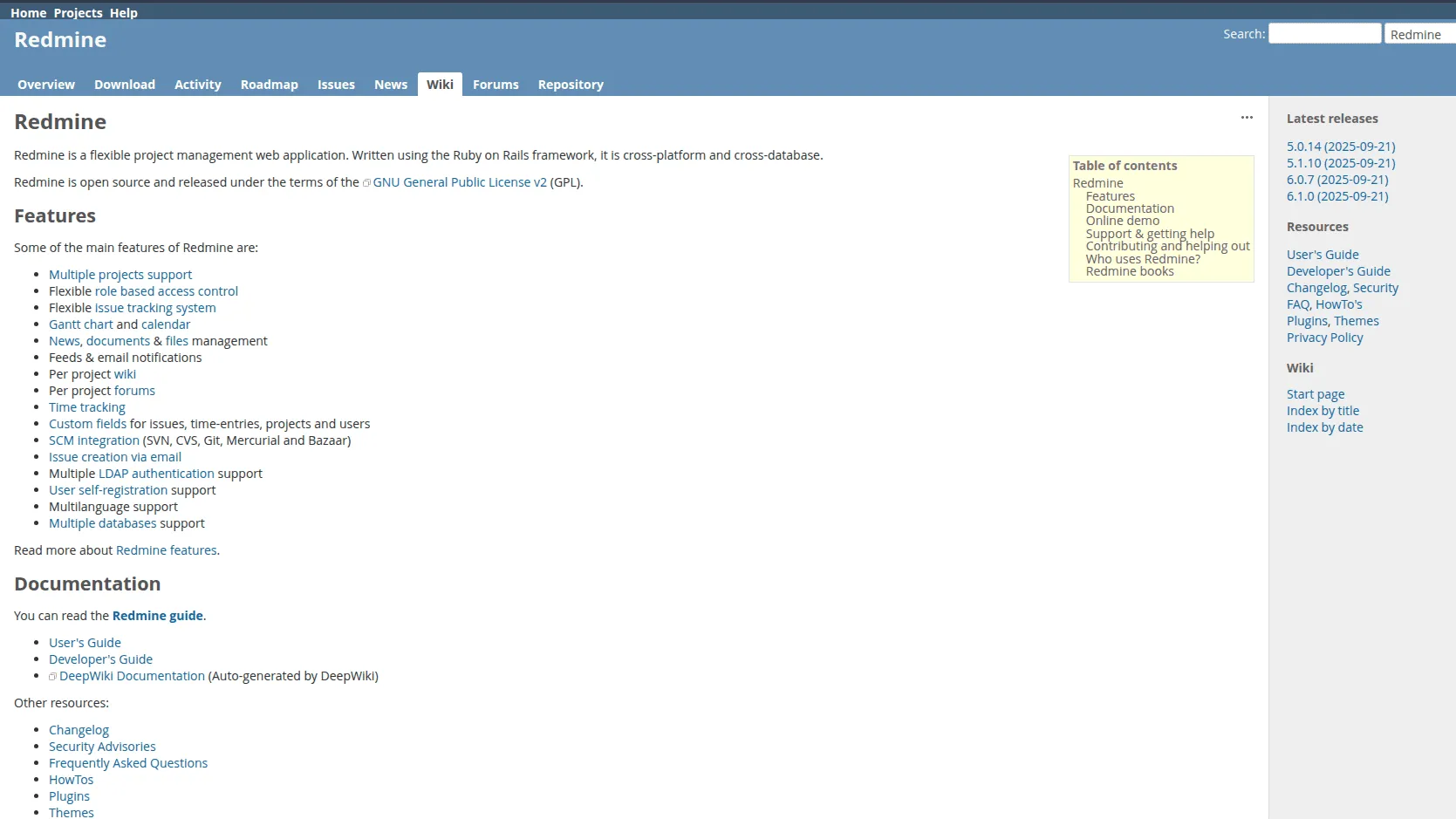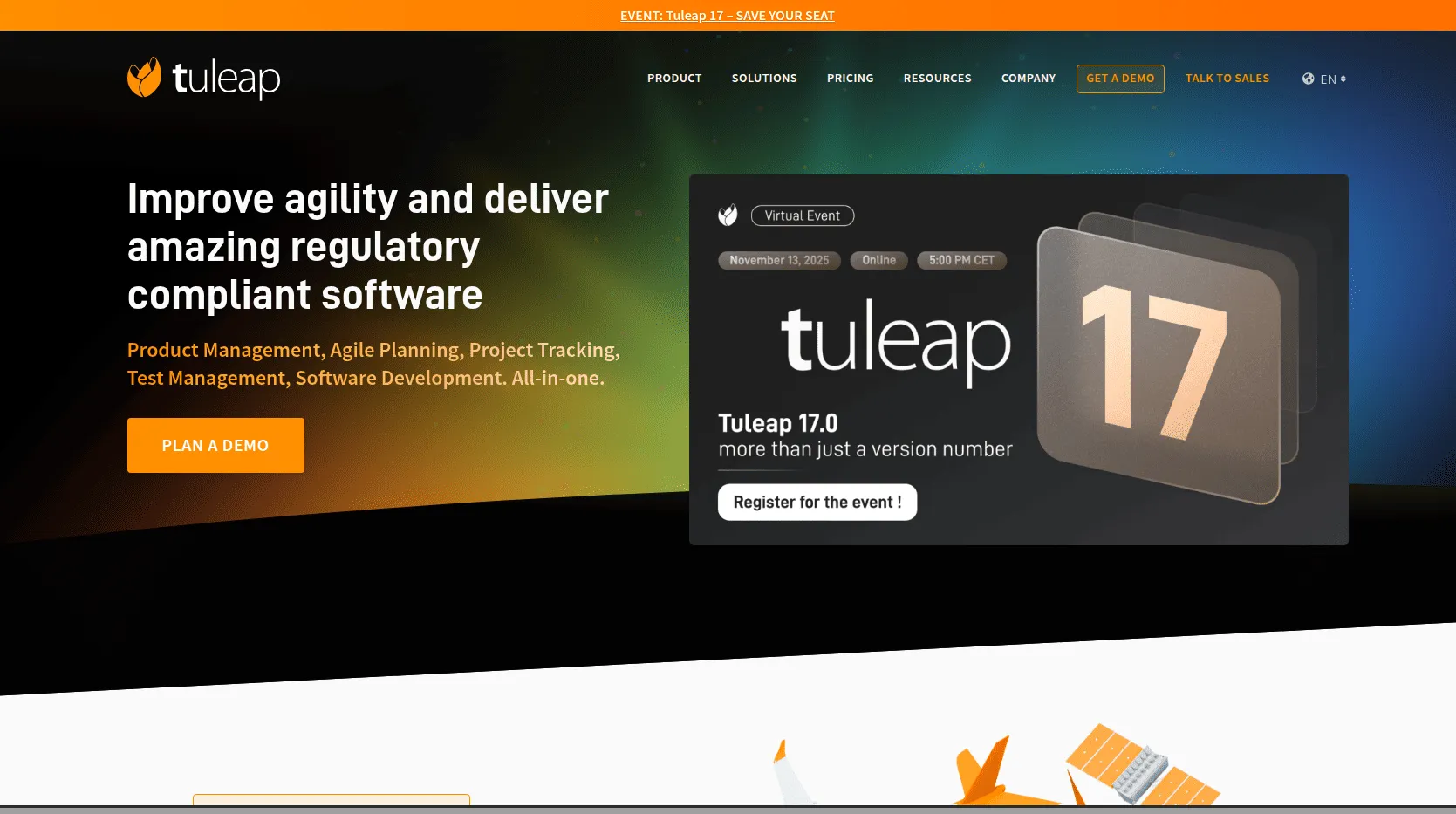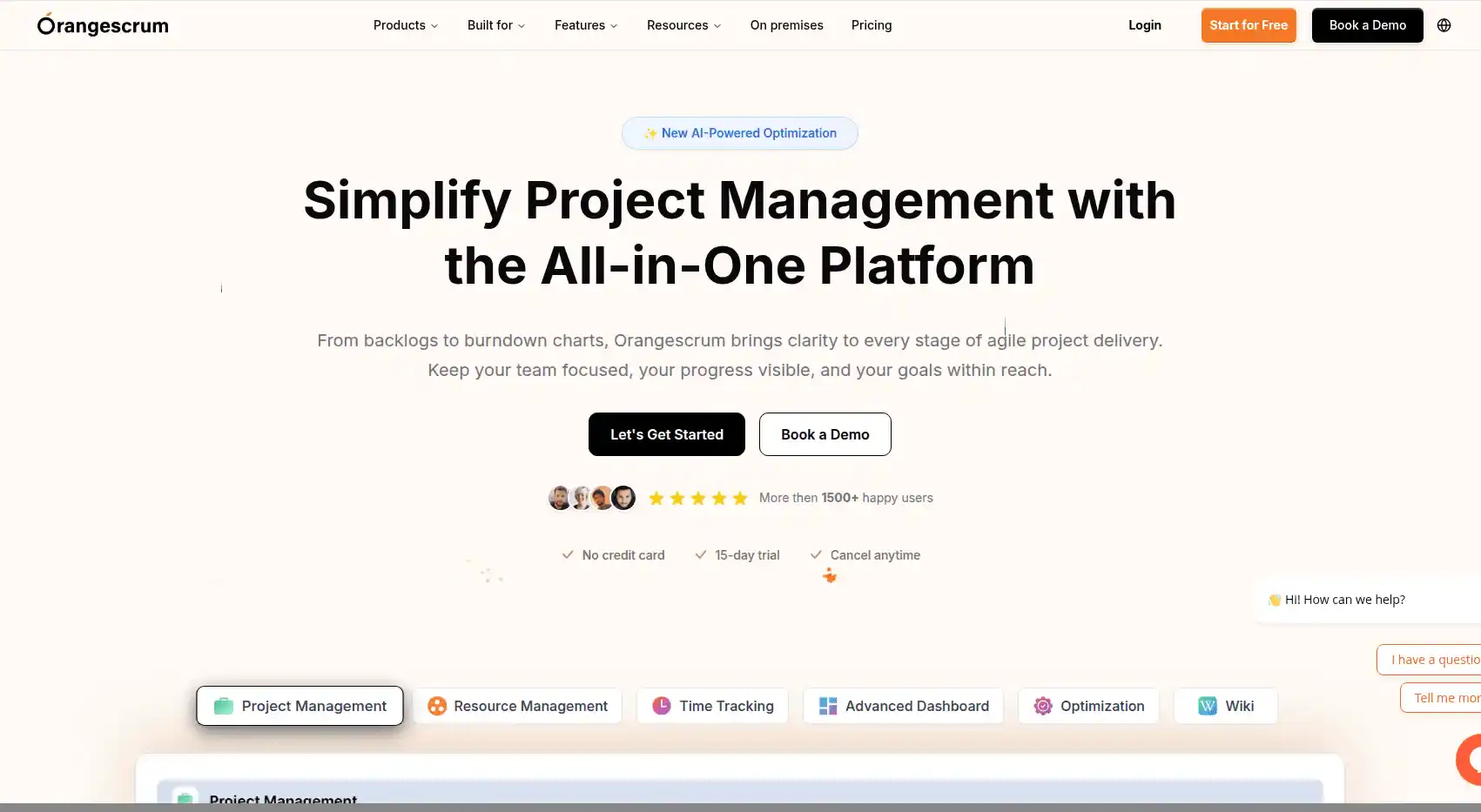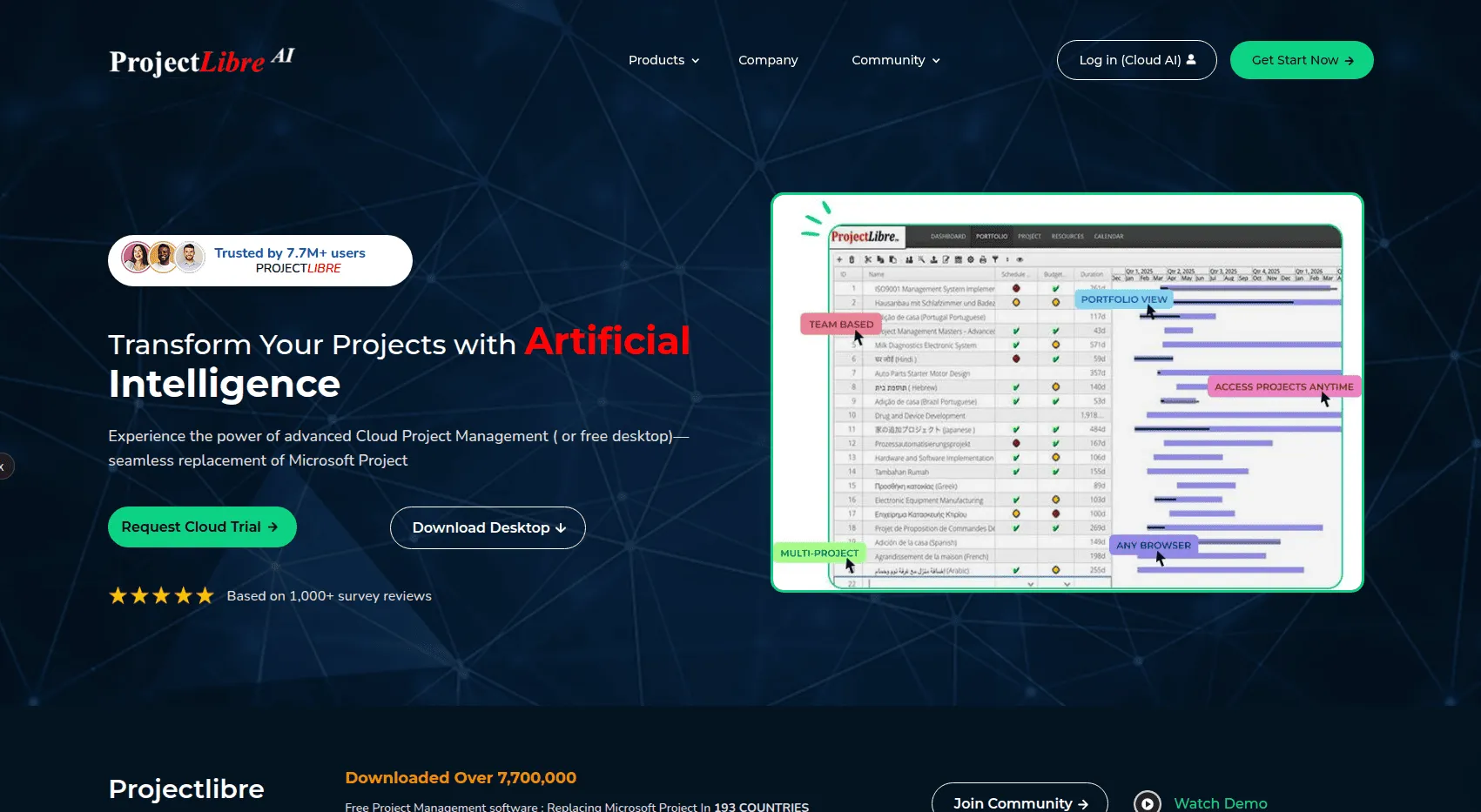Table of Contents
If you’re leading a team, whether a DevOps, engineering, product, or any other team, you’ve probably felt the pressure. Those proprietary project management tools with their ever-rising per-seat fees- can start to feel less like helpful software and more like a tax on your team’s growth. Even worse, you’re often stuck inside rigid, cookie-cutter workflows that don’t reflect the fast, flexible nature of a real CI/CD pipeline. Before long, you’re spending more time building workarounds for your project management tool than building your actual product.
That’s exactly where open-source project management (PM) tools can change the game. They give you freedom from vendor lock-in, help cut down your operating costs, and most importantly, put you back in control. With open source, you can shape your workflow to fit your team, not the other way around.
This guide isn’t just another roundup of software options. It’s a carefully curated walkthrough of the most capable, enterprise-ready open-source PM platforms that can help your team work smarter, faster, and with more autonomy.
Before we explore the tools themselves, let’s learn about what exactly Open Source Project Management tools are.
What Exactly Is Open Source Project Management Software?
In simple terms, open-source project management software is any tool whose source code is made publicly available. Unlike proprietary software, where the code is a locked trade secret, open-source code can be freely viewed, modified, and distributed. This model is built on the principles of transparency, community-driven collaboration, and shared knowledge. It’s this foundation that allows for the incredible cost-effectiveness, deep customizability, and rapid innovation we just covered.
Let’s explore the key benefits before we dive into the tools themselves.
The Real-World Benefits: Why Open Source PM Tools Are a Strategic Win

Making the switch to an open-source PM tool is far more than a cost-saving tactic; it’s a strategic move that directly boosts your bottom line and operational agility. Let’s break down the tangible value you’ll see.
Slash Your Total Cost of Ownership (TCO)
The most immediate and obvious benefit is financial. By eliminating steep, recurring per-user licensing fees, you free up a significant portion of your budget. Think about what that money could do if it were reallocated to hiring another engineer, investing in better infrastructure, or funding a new R&D initiative. While you’ll have some hosting and maintenance costs, they are a fraction of the price of enterprise SaaS licenses, giving you a drastically lower TCO.
Gain Unrivaled Control and Flexibility
This is where the real magic happens for a DevOps team. With proprietary software, you’re stuck with the features and integrations the vendor decides to provide. Open-source software gives you the keys to the kingdom. With access to the source code, you can build bespoke integrations with your existing toolchain, from your Git repository to your monitoring stack. You can automate unique deployment workflows, create custom fields that match your processes precisely, and tailor the entire platform to your team’s needs, not the other way around. This transparency and customizability eliminate the friction caused by rigid, black-box systems.
Enhance Security and Foster Innovation
It might seem counterintuitive, but the transparency of open-source code often leads to more secure software. Instead of relying on a single vendor’s security team, you benefit from a global community of developers and security experts who can inspect the code, identify vulnerabilities, and contribute patches, often much faster than a proprietary vendor. This community collaboration also serves as a powerful engine for innovation. Features are developed and improved at a rapid pace, driven by the real-world needs of users like you, not by a vendor’s quarterly product roadmap.
These strategic advantages are all rooted in the fundamental principles of the open-source model. So, what exactly does that mean in the context of project management software?
Now, let’s look at the best tools on the market that are built on this powerful foundation.
The Top 10 Enterprise-Ready Open Source PM Tools
This isn’t a random roundup. I’ve curated this list to focus on powerful, scalable, and self-hostable tools that are particularly relevant for enterprise DevOps environments. Each of these platforms offers a unique set of capabilities to help you manage your entire development lifecycle more effectively.
To make this list easier to navigate, I’ve grouped these tools into a few key categories. We’ll start with the all-in-one enterprise powerhouses like OpenProject and Tuleap. Then, we’ll look at the Agile-native specialists like Taiga. For teams that prioritize ultimate flexibility, we’ll cover highly extensible platforms like Redmine and the no-code builder NocoBase. Finally, we’ll cover direct, self-hosted alternatives to popular proprietary tools like WeKan (for Trello) and ProjectLibre (for MS Project).
1. OpenProject

OpenProject is a comprehensive, web-based platform that supports classic, Agile, and hybrid project management. It’s a powerhouse for teams that need to manage everything from initial planning and roadmapping to execution and budget reporting in a single, secure environment.
Key Features for DevOps & ROI
- Full Lifecycle Management: Manage everything from high-level roadmaps and Gantt charts to Agile boards and backlogs, reducing the need for multiple, disconnected tools.
- Integrated Time and Cost Tracking: Directly link work packages to budgets and cost reports, giving you clear visibility into project ROI without manual spreadsheet work.
- Robust Workflow & Task Automation: Create custom workflows and automate task assignments to reduce manual overhead and ensure process consistency across your pipelines.
- Deep Documentation & Collaboration: Built-in wikis, forums, and document management keep all project knowledge centralized, minimizing context switching and onboarding time.
Ideal For
Enterprise teams that need a single platform to manage classic, Agile, and hybrid project methodologies with robust cost and time tracking.
Pros & Cons
| Pros | Cons |
| Supports diverse methodologies (Agile & classic) | Extensive features can create a learning curve |
| Strong community and customization options | Self-hosted version can be resource-intensive |
| Excellent time, cost, and budget reporting | The UI can feel less intuitive for new users |
| Comprehensive feature set in one platform |
Links
- Website: https://www.openproject.org/
- GitHub: https://github.com/opf/openproject
2. Redmine

Redmine is a highly flexible, web-based project management tool built on the Ruby on Rails framework. It’s known for its multi-project support, issue tracking, and extensive customizability through a rich ecosystem of community-driven plugins.
Key Features for DevOps & ROI
- Deep Git/SVN Integration: Link commits and merge requests directly to tasks and issues, providing full traceability and reducing context switching for developers.
- Pipeline-Mirroring Workflows: Define custom issue types and status transitions that precisely mirror your CI/CD stages (e.g., ‘In Staging,’ ‘Awaiting UAT’), ensuring the PM tool is a true reflection of your development reality.
- Multi-Project Management: Manage dozens of projects from a single instance with shared users, settings, and reporting, perfect for larger organizations.
- Extensive Plugin Architecture: Tap into a massive library of plugins to add functionality for everything from CI/CD integration to advanced charting, avoiding costly custom development.
Ideal For
Technical teams, especially in software development, need a highly customizable, multi-project platform with strong version control integration.
Pros & Cons
| Pros | Cons |
| Mature platform with a highly active community | UI design can feel dated compared to modern tools |
| Extremely flexible and extensible via plugins | Initial setup requires technical expertise (Ruby) |
| Excellent integration with version control systems | Customization can become complex |
| Robust role-based access control for security |
Links
- Website: https://www.redmine.org/
- GitHub: https://github.com/redmine/redmine
3. Taiga

Taiga is a project management platform designed specifically for Agile teams. Its intuitive interface and focus on Scrum and Kanban methodologies make it easy to manage user stories, sprints, and backlogs without unnecessary complexity.
Key Features for DevOps & ROI
- Agile-Native Workflow: Built from the ground up for Scrum and Kanban, with features like sprint planning, burndown charts, and user story management that accelerate Agile ceremonies.
- Intuitive User Experience: A clean, modern UI reduces the learning curve, allowing teams to get up and running quickly and focus on work, not on learning the tool.
- Integrated Issue Tracking: Manage bugs and project issues directly within the platform, linking them to user stories and sprints for a unified workflow.
- Third-Party Integrations: Connect with popular tools like GitHub, GitLab, and Slack to keep your development and communication workflows seamlessly connected.
Ideal For
Agile development teams that want an intuitive, beautifully designed tool to manage their Scrum and Kanban workflows without the overhead of more complex systems.
Pros & Cons
| Pros | Cons |
| Beautiful, user-friendly interface | Less suited for classic waterfall methodologies |
| Excellent support for Scrum and Kanban | Self-hosting may require technical maintenance |
| Active community and good documentation | Integration options are more limited than larger tools |
| Built-in wikis and communication features |
Links
- Website: https://taiga.io/
- GitHub: https://github.com/kaleidos-ventures
4. Tuleap

Tuleap is more than just a PM tool; it’s a full-fledged open-source Application Lifecycle Management (ALM) platform. It provides a unified suite for managing every stage of software development, from initial planning and issue tracking to version control and test management.
Key Features for DevOps & ROI
- Single Source of Truth for Compliance: By integrating requirements, Git/SVN commits, and test management, Tuleap provides an auditable trail for every line of code, crucial for teams in regulated environments.
- Built-in Agile & Test Management: Supports Scrum and Kanban while also offering powerful test management capabilities, eliminating the need for separate tools like TestRail.
- Advanced Risk Management: Identify, track, and mitigate project risks directly within the platform, crucial for enterprise compliance and delivery assurance.
- High Customizability: Adapt the platform with custom workflows and fields to meet the specific demands of regulated industries or highly specialized development processes.
Ideal For
Enterprise software development teams, particularly in regulated industries, need a comprehensive ALM solution to manage the entire software lifecycle.
Pros & Cons
| Pros | Cons |
| Integrated ALM platform covers the full lifecycle | Advanced features can have a steep learning curve |
| Strong support for both Scrum and Kanban | Can be overkill for smaller, simpler projects |
| Integrated Git/SVN for code integrity | Self-hosted version can be resource-intensive |
| Highly adaptable and customizable |
Links
- Website: https://www.tuleap.org/
- Source Code: https://tuleap.net/plugins/git/tuleap/tuleap/stable
5. WeKan

WeKan is a straightforward, open-source Kanban board application. It is, for all intents and purposes, a powerful, self-hosted alternative to Trello, giving you complete control over your data and infrastructure while providing a familiar, intuitive card-based workflow.
Key Features for DevOps & ROI
- Total Data Sovereignty: By self-hosting, you maintain 100% control over your project data, a critical requirement for organizations with strict security or compliance needs.
- Familiar Kanban Workflow: The intuitive drag-and-drop interface requires virtually no training, allowing teams to be productive immediately.
- Workflow Automation Rules: Automate repetitive actions like moving cards or assigning users based on triggers, which saves time and reduces manual errors.
- Lightweight & Easy Deployment: Supports Docker deployment, making it relatively simple for a DevOps team to install, maintain, and scale on their own infrastructure.
Ideal For
Teams of any size looking for a simple, highly visual, and self-hosted Trello alternative to manage tasks and workflows.
Pros & Cons
| Pros | Cons |
| Simple, intuitive, and easy to set up | Primarily focused on Kanban; lacks Gantt charts |
| Self-hosted for complete data control | Built-in integrations are somewhat limited |
| Active community and multi-language support | UI is functional but less polished than commercial tools |
| Lightweight with minimal resource requirements |
Links:
- Website: https://wekan.fi/
- GitHub: https://github.com/wekan/wekan
6. NocoBase

NocoBase stands out because it’s not just a PM tool, it’s an open-source no-code/low-code platform for building internal tools. You can use it to construct a highly customized task or project management system that is perfectly tailored to your most specific business processes.
Key Features for DevOps & ROI
- Ultimate Customization: Move beyond pre-built tools and create the exact system you need with flexible data modeling, custom fields, and unique data relationships.
- Visual Workflow Automation: Design and automate complex business processes with a visual workflow builder, dramatically reducing the need for custom scripting and developer intervention.
- Granular Permission Control: Implement fine-grained, role-based access control to ensure data security and integrity, which is essential for enterprise use.
- Plugin-Based Extensibility: Leverage a rich plugin ecosystem or build your own to extend functionality and integrate with any third-party service via REST APIs.
Ideal For
Enterprise teams with unique workflow requirements that off-the-shelf PM tools can’t meet, empowering them to build their own solution with no-code/low-code speed.
Pros & Cons
| Pros | Cons |
| Extremely flexible and highly customizable | Requires time to learn the data modeling features |
| Powerful workflow automation and permissions | Community is newer than more established projects |
| Great for building more than just PM tools | Less of an “out-of-the-box” solution |
| Low maintenance costs for tech-savvy teams |
Links:
- Website: https://www.nocobase.com/
- GitHub: https://github.com/nocobase/nocobase
7. Focalboard

Originating from the Mattermost team, Focalboard is an open-source, self-hosted project management tool designed as a direct alternative to Trello, Notion, and Asana. It offers multiple views (Kanban, table, calendar) to help teams organize and track work.
Key Features for DevOps & ROI
- Multi-View Flexibility: Switch between Kanban boards, tables, and calendars to visualize work in the way that makes the most sense for the task at hand, increasing clarity and efficiency.
- Seamless Mattermost Integration: For teams already using Mattermost, Focalboard integrates directly, consolidating communication and project management into a single platform.
- Complete Data Control: As a self-hosted solution, you own your data, ensuring it complies with your organization’s security and privacy policies.
- Modern User Experience: The interface is clean, modern, and aesthetically pleasing, which helps with user adoption and reduces training time.
Ideal For
Teams looking for a modern, self-hosted alternative to Notion or Asana, especially those who already use Mattermost for collaboration.
Pros & Cons
| Pros | Cons |
| Modern, intuitive interface with multiple views | The plugin ecosystem is still developing |
| Seamless integration with Mattermost | Lacks advanced budget and resource tracking |
| Straightforward to deploy and maintain | Standalone use requires some additional setup |
| Active development and community support |
Links
- Website: https://www.focalboard.com/
- GitHub: https://github.com/mattermost-community/focalboard
8. OrangeScrum

OrangeScrum is a comprehensive project management tool that supports both Agile and Waterfall methodologies. It provides a full suite of features, including task management, resource planning, time tracking, and even invoicing, making it a powerful all-in-one solution.
Key Features for DevOps & ROI
- Integrated Resource Management: Plan and manage your team’s workload effectively, ensuring you have the right people on the right tasks and avoiding burnout.
- Built-in Time Tracking & Billing: Track time spent on tasks and generate detailed reports for invoicing, providing clear financial oversight of your projects.
- Agile & Waterfall Support: The flexibility to use Scrum, Kanban, or traditional project planning allows you to choose the best methodology for each project without changing tools.
- Extensible through Modules: A modular architecture allows you to add features and plugins as your needs grow, scaling the tool with your business.
Ideal For
Businesses and agencies that need a single, scalable tool to manage projects, resources, time, and client billing from end to end.
Pros & Cons
| Pros | Cons |
| Extensive feature set for full project lifecycle | UI design could be improved for better usability |
| Strong resource and workload management | Initial setup can be technically demanding |
| Supports both Agile and classic methods | Self-hosted deployments require adequate server resources |
| Built-in CRM for managing client relationships |
Links
- Website: https://www.orangescrum.com/
- GitHub: https://github.com/Orangescrum/orangescrum
9. ProjectLibre

ProjectLibre is positioned as the leading open-source alternative to Microsoft Project. It is a desktop-based tool that excels at traditional project management, offering robust features for task scheduling, resource allocation, and Gantt chart visualization.
Key Features for DevOps & ROI
- Microsoft Project Compatibility: Open, edit, and save Microsoft Project files, enabling seamless collaboration with clients or departments that are standardized on MS Project, saving on licensing costs.
- Powerful Gantt Chart & Scheduling: Create detailed project timelines, define task dependencies, and visualize the critical path to manage complex projects effectively.
- Resource Allocation & Balancing: Assign resources to tasks and balance workloads across the team to optimize efficiency and prevent bottlenecks.
- Cost-Effective Solution: Provides the core functionality of expensive proprietary tools for free, making it an excellent choice for budget-conscious organizations.
Ideal For
Project managers and teams who need a powerful, free, and self-hosted alternative to Microsoft Project for managing complex, timeline-driven projects.
Pros & Cons
| Pros | Cons |
| A direct, free replacement for MS Project | Lacks some advanced reporting of premium tools |
| High compatibility with MPP files | Primarily a desktop tool, less cloud-native |
| Strong Gantt chart and scheduling features | Learning curve for users new to this type of software |
| Cross-platform (Windows, macOS, Linux) |
Links
- Website: https://www.projectlibre.com/
- SourceForge Project: https://sourceforge.net/projects/projectlibre/
10. Trello

While Trello is a household name in project management, it’s a proprietary SaaS tool, not open source. We’re including it here as a familiar baseline to contrast the benefits of data sovereignty, cost, and customizability offered by true open-source alternatives like WeKan and Focalboard.
Key Features for DevOps & ROI:
- Extreme Ease of Use: The intuitive boards, lists, and cards interface allows teams to get started in minutes with virtually no training, maximizing adoption.
- Visual Workflow Management: Provides a clear, at-a-glance view of project status, helping teams identify bottlenecks and track progress in real-time.
- Vast Integration Ecosystem: Connects with thousands of third-party tools via “Power-Ups,” allowing you to embed its simple workflow into a larger, more complex toolchain.
Ideal For
Teams of all sizes that need a simple, highly visual, and quick-to-adopt tool for task tracking and basic project management.
Pros & Cons
| Pros | Cons |
| Extremely user-friendly and intuitive | Not open source; you don’t control the code or data (a key risk WeKan eliminates) |
| Flexible and highly customizable with Power-Ups | Advanced features are locked behind paid tiers (unlike the all-inclusive nature of self-hosted tools) |
| Excellent for collaborative task management | Lacks advanced reporting and analytics in the free version |
| Strong mobile apps for on-the-go access | Can become cluttered for very complex projects |
Links
- Website: https://trello.com/
Final Thoughts
As you can see, the open-source world offers a powerful suite of project management tools that provide a clear path to greater efficiency, deeper control, and significant cost savings. The right choice ultimately depends on your team’s size, your preferred methodology, be it Agile, Waterfall, or something in between and your existing tech stack. The key is that you have options that can be molded to fit you, not the other way around.
Feeling overwhelmed by the options? That’s where I can help. Let’s schedule a 30-minute discovery call to map your current CI/CD pipeline and development workflow. Based on that, I can provide a tailored recommendation for the top 2-3 open-source tools that will integrate seamlessly into your stack and deliver the highest ROI. Reach out to me here to book a slot.
Frequently Asked Questions (FAQs)
Here are some common questions I get from teams considering a move to open-source PM tools.
Q1. How does the security of open-source software compare to proprietary enterprise tools?
The transparency of open-source software is one of its greatest security strengths. With the source code available for public inspection, a global community of developers and security experts can identify and patch vulnerabilities, often much faster than a closed-source vendor. Many eyes make all bugs shallow.
Q2. What are the “hidden” costs of self-hosting an open-source PM tool?
It’s true that “free” doesn’t mean zero cost. You’ll need to account for server/hosting expenses and the time your team spends on initial setup and ongoing maintenance. However, when you compare these manageable operational costs to the high, recurring, per-user license fees of proprietary SaaS tools, the Total Cost of Ownership (TCO) for an open-source solution is almost always significantly lower.
Q3. Can these tools really scale to support a large enterprise team?
Absolutely. Tools like OpenProject, Redmine, and Tuleap were specifically designed with enterprise needs in mind. They support complex multi-project management, granular role-based permissions, and can be scaled to support hundreds or thousands of users when deployed on appropriate infrastructure.
Q4. How difficult is it to migrate from a tool like Jira or Asana?
Migration requires careful planning. Some tools, like ProjectLibre, offer direct compatibility with files from other programs (e.g., Microsoft Project). Most others provide robust APIs that allow you to script data migration. While it’s not a one-click process, it’s a well-trodden path, and the long-term benefits of flexibility and cost savings often justify the initial effort. In my experience, a phased migration, starting with a single non-critical project, is the best way to de-risk the transition and build momentum.
Q5. We have very specific workflow needs. How customizable are these tools?
This is where open-source shines. Beyond built-in features like custom fields and configurable workflows, many of these tools have extensive plugin architectures. And for the ultimate in flexibility, having access to the source code means you can modify or extend the tool in any way imaginable to perfectly match your unique processes.
Q6. What level of support can I expect without a formal enterprise contract?
The open-source model relies on community support. This includes active user forums, extensive official documentation, and community-driven knowledge bases. While you might not have a dedicated account manager, you have access to a global community of experts. For mission-critical deployments, many of the larger projects (like OpenProject) also offer premium, paid support plans that provide enterprise-level assistance.